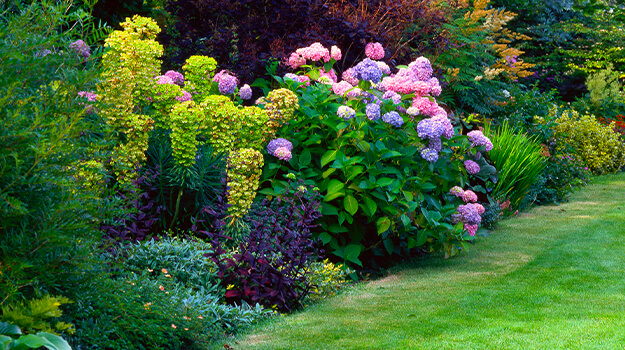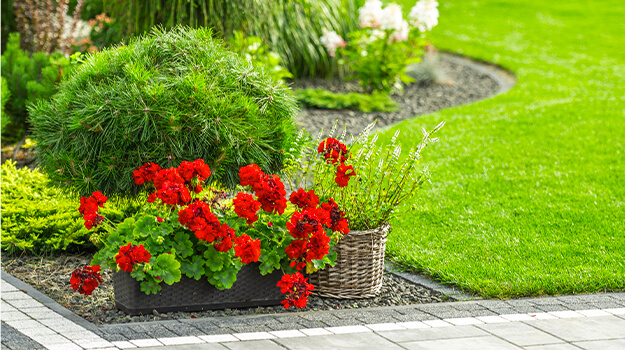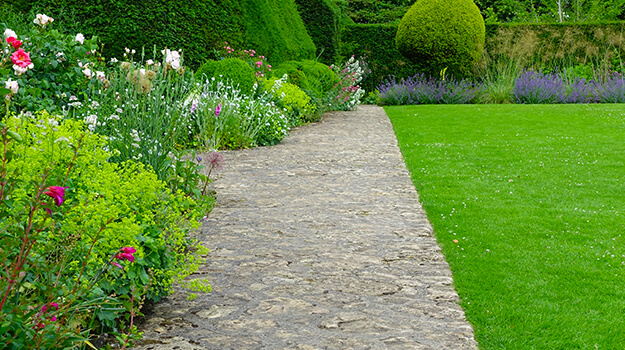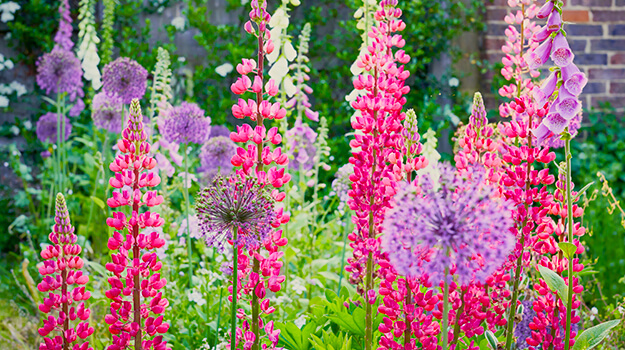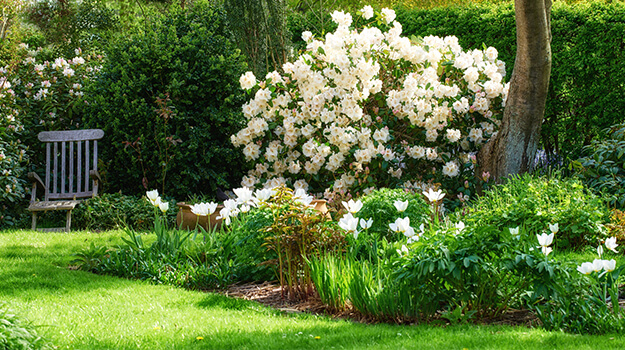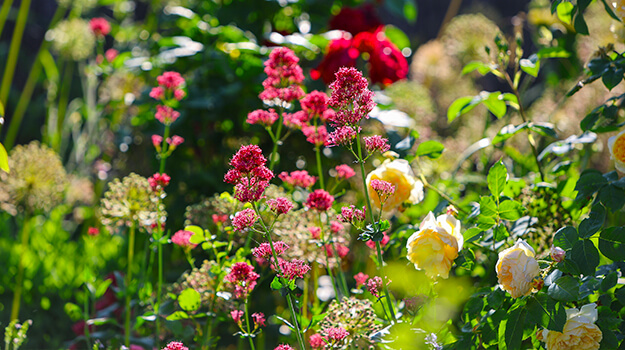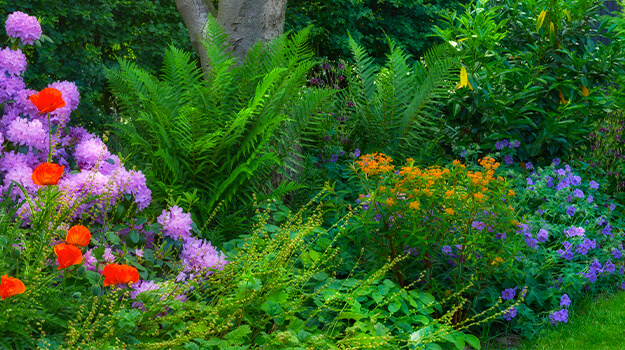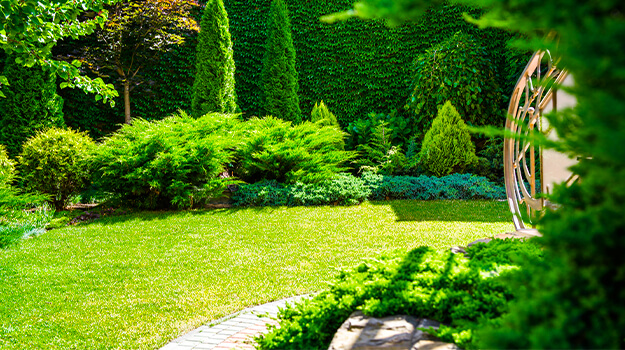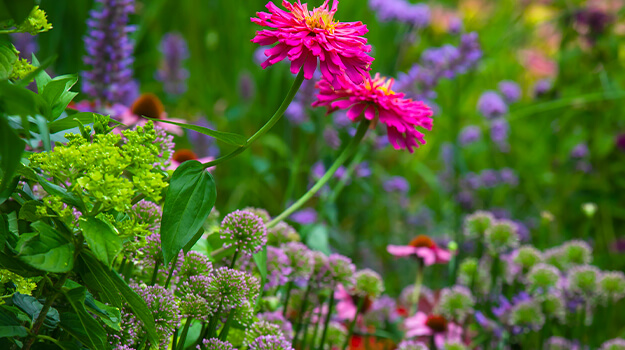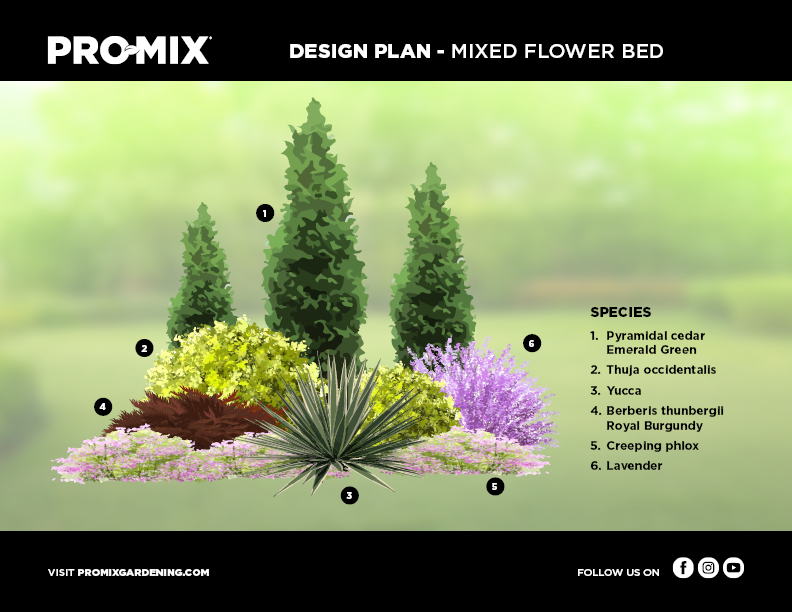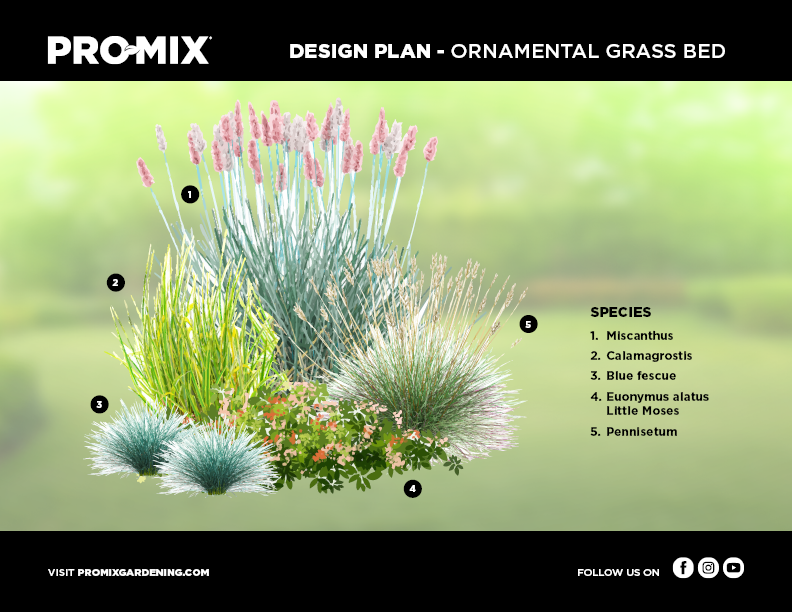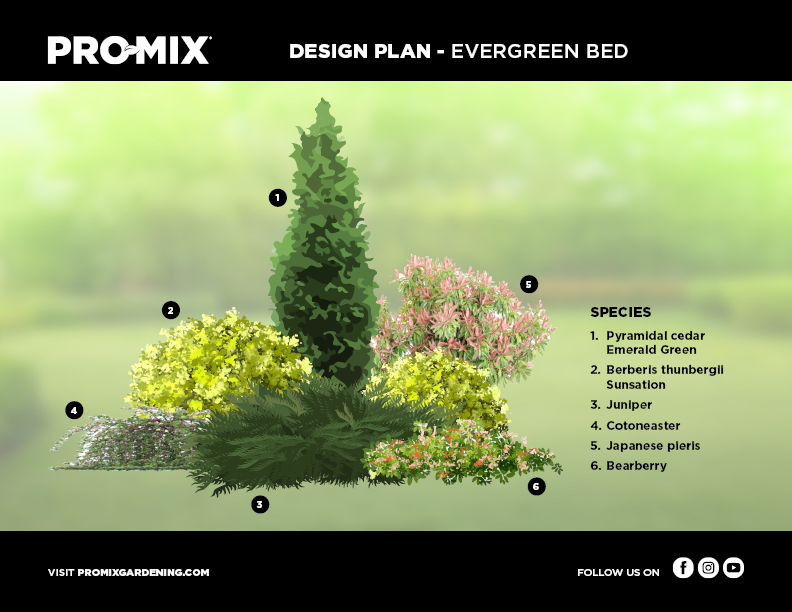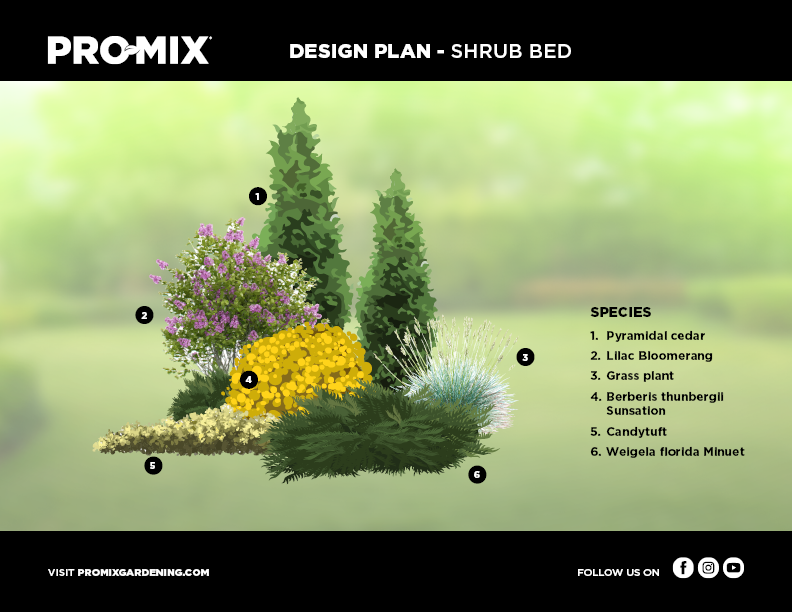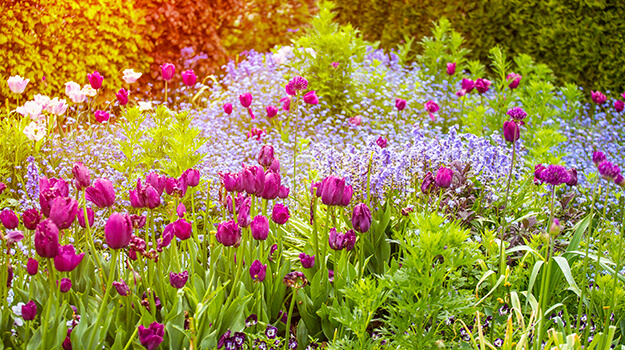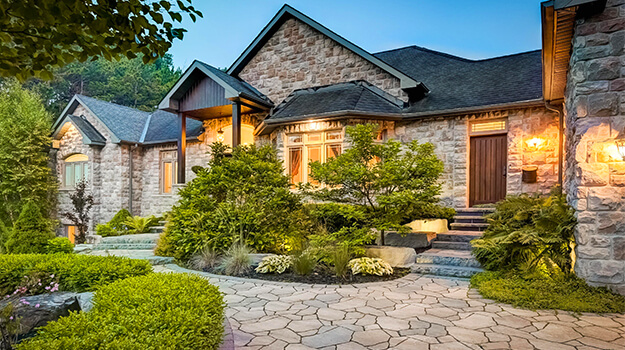TABLE OF CONTENTS
- How to outline a flower bed
- How wide should my flower beds be?
- Which plants to choose for my landscaping?
- How to place plants in a bed
- Creating a flower bed in a sunny area
- Creating a flower bed in a shady area
- How to create an evergreen bed
- How to create a pollinator flower bed
- Beauty year-round!
- PLANTING GUIDE: let our landscaping plans inspire you
Successfully designing a bed can be harder than it seems. First comes the question of shape and size. Then comes the choice of plants. To generate interest all season long, a bed must be well planned. It should include plants with similar soil, light and water requirements.
Get inspired by our plans and follow our advice to create a landscaping worthy of a pro.
How to outline a flower bed
Making a sketch can help you visualize the final result. To help you determine the place and size of your flower bed, use your location plan.
Use a garden hose to replicate your shape on the ground and refine its contours. Its flexibility allows you to create smooth shapes at will. Once you're satisfied with the outline, simply cut the lawn along the hose. A half-moon edger will help you do this quite easily.
How wide should my flower beds be?
A flower bed along the foundation should be 6 to 8 feet wide so it matches the dimensions of the house. Leave at least one foot of space between the plants and the house to limit moisture, facilitate maintenance and allow your plants to thrive.
Along a path, a flower bed should be 50 cm to 1 metre wide (or more if possible) and should have plants of varying heights. This way, it will look less monotonous.
Elsewhere in the yard, 1.80 m is the recommended minimum width to allow for a combination of low, medium and tall plants. The longer the bed, the wider it should be. For a length of 10 to 20 m (or more), a width of 2.50 m is reasonable.
As for length, the recommended minimum is 3 metres. It’s all a matter of balance!
TIP : Remember that a border can be corrected or enlarged at any time, so don't panic! If in doubt, start smaller. Enlarging later is less demanding than having to re-establish a lawn!
Download our MIXED FLOWER BED PLAN here.
Which plants to choose for my landscaping?
Group plants that have the same needs and are suited to the location where they will grow (hardiness zone, soil quality, drainage, sunlight level).
Avoid impulsive choices and prefer plants that generate interest year-round, especially if the bed is small and has a limited number of plants.
Avoid chaos by limiting the number of colours and plant varieties. If it's a large bed, opt for repetition rather than a wide variety of plants. Avoid creating small spots of colour by grouping several identical plants together. The effect will be balanced and successful, whether viewed from close up or from a distance.
Also read: How to arrange flower colors in the garden?
How to place plants in a bed
Place your plants according to their height and width once they have reached maturity. The effect may not be optimal in the first few years, but this will save you from having to reorganize everything later. To fill empty spaces, you can plant annuals or even perennials that you can easily move later... and even divide to get more plants without paying.
Choose plants of varying sizes. Larger ones can be displayed solo, while smaller ones can be planted in small groups (always in odd numbers) to avoid creating an unbalanced effect.
When it comes to height, plants are placed in rows: the smallest at the front, the medium-sized ones in the centre, and the tallest at the back. This allows you to see all the plants at once and creates a beautiful overall effect.
If the size of the bed allows it, create different points of interest and play with repetitions (different plants of the same colour or the same plant in different colours).
Download our SHRUB BED PLAN here.
Creating a flower bed in a sunny area
If it's a small flower bed, also make sure to maintain balance while creating interest by playing with shapes, colours and textures.
Placed in an unsuitable environment, a plant won’t thrive and will be more vulnerable to disease and insect attacks.
It is possible to modify certain characteristics of a spot, but the time, energy and money required may be disproportionate to the results. Creating a landscape consisting of plants perfectly adapted to their environment is much simpler.
Download our ORNAMENTAL GRASS BED PLAN here.
Creating a flower bed in a shady area
Creating a flower bed under a tree is a great option to replace a lawn that's struggling to thrive. Choose shade-loving plants that don't have high water and nutrient requirements, as they will compete with your tree. When necessary, water and fertilize your plants when recommended.
Check out our fertilization guide
Are your tree's roots exposed and it's difficult to plant? Add soil once the lawn is removed and opt for small-sized plants. Their root system will develop and find its place in the soil as they grow.
How to create an evergreen bed
Evergreens add interest to the garden. Because they don't lose their leaves and retain their appeal throughout the year, they play an important structural role. They create a beautiful contrast with the fall colours and are the stars of the garden in winter. By early spring, they are already at their best. They help us forget that gardens can sometimes take a while to awaken.
Evergreens are perfect for hiding foundations or screening unsightly views. They're also ideal as a backdrop for all your plantings. The annuals and perennials planted in front are sure to make an impact.
Download our EVERGREEN BED PLAN here.
How to create a pollinator flower bed
Creating a pollinator flower bed near your vegetable garden ensures an exceptional harvest. Choose native plants and simple, colourful flowers. Whether they're more nutritious or more attractive, success is guaranteed.
To know what to plant, read: How to attract and feed pollinators
If you have enough space, include a flowering shrub like the Saskatoon berry. Its early flowering will delight pollinators early in the season, when they are most vulnerable. Its small fruits (which you can eat) will attract birds, and you'll enjoy both its superb fall colour and the beautiful balance of its structure in winter.
Decorate your flower bed with a birdhouse or bird feeder, a birdbath, a watering station for bees and butterflies, an insect hotel, or a bee feeder. And why not plant pumpkins, squash or melons along the border? Pollination will be guaranteed, and your flower bed will be truly original!
Beauty year-round!
Regardless of its size or location, your bed should group plants together to provide a year-round spectacle. Of course, it can also be composed solely of perennials that disappear in late fall and that won't have any impact on the aesthetics of your winter landscape.
PLANTING GUIDE: let our landscaping plans inspire you

